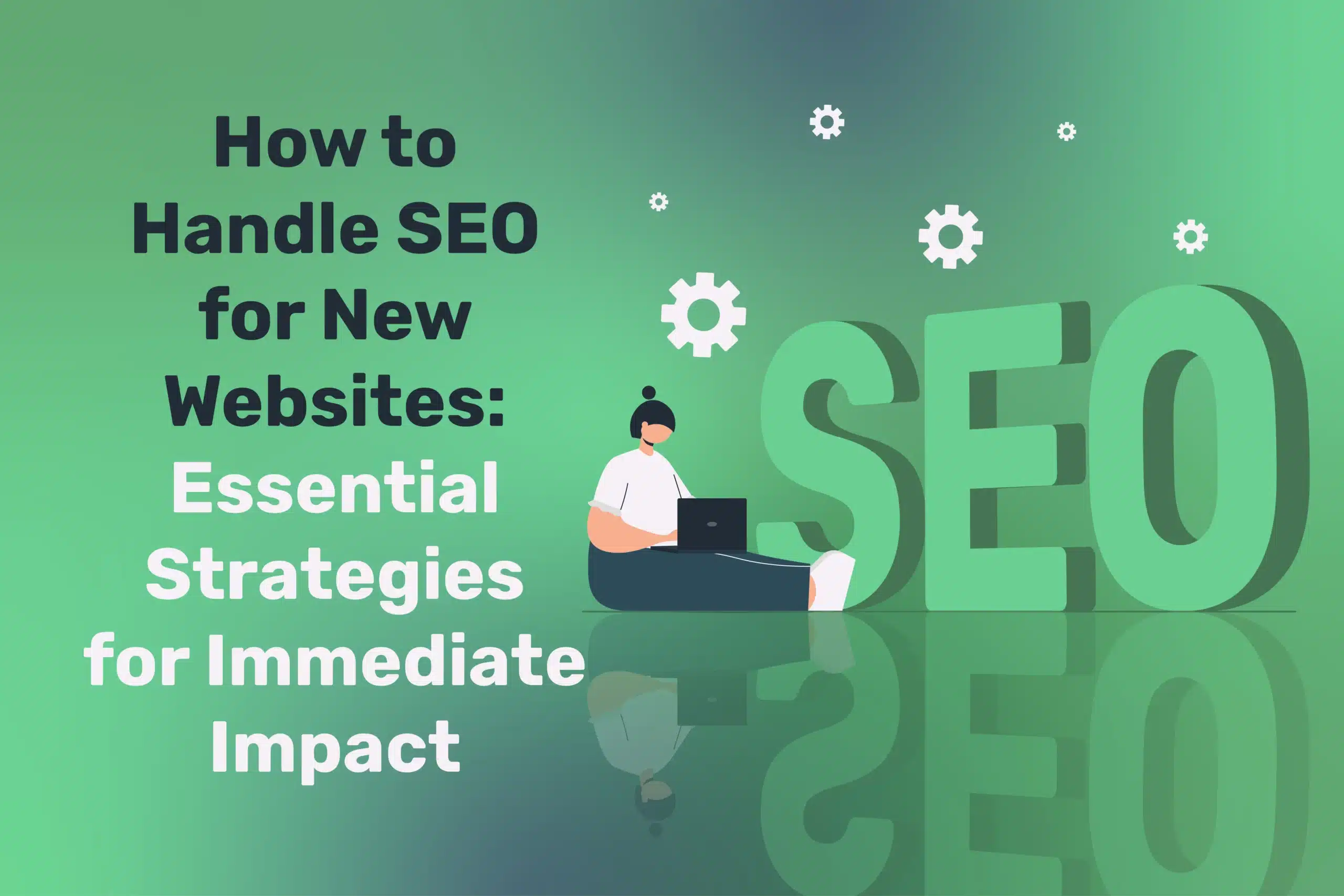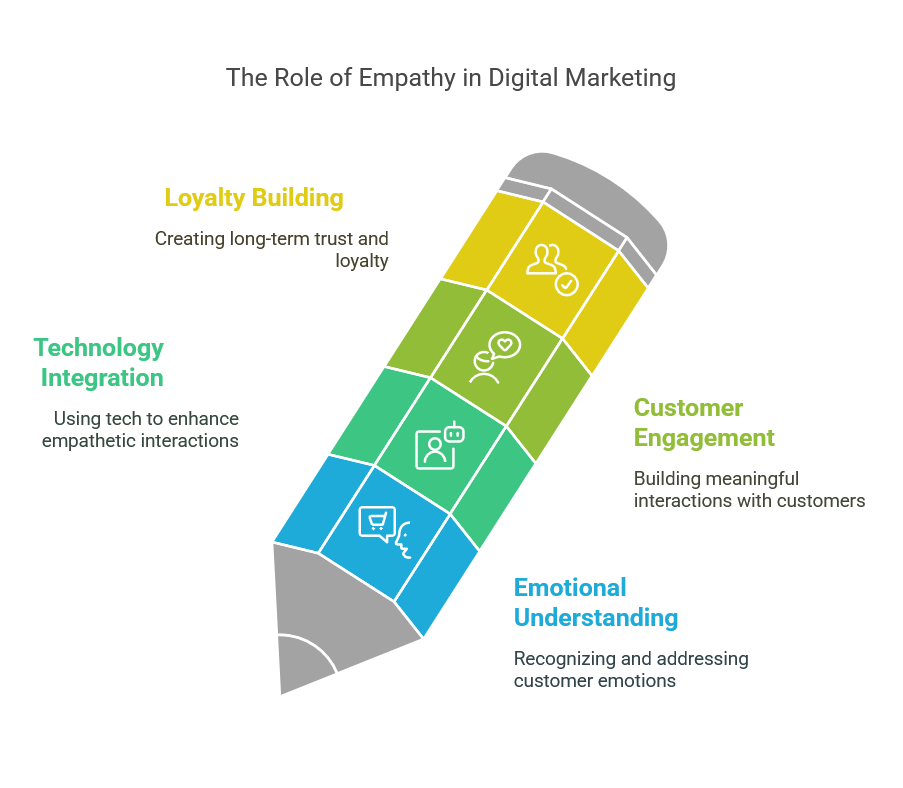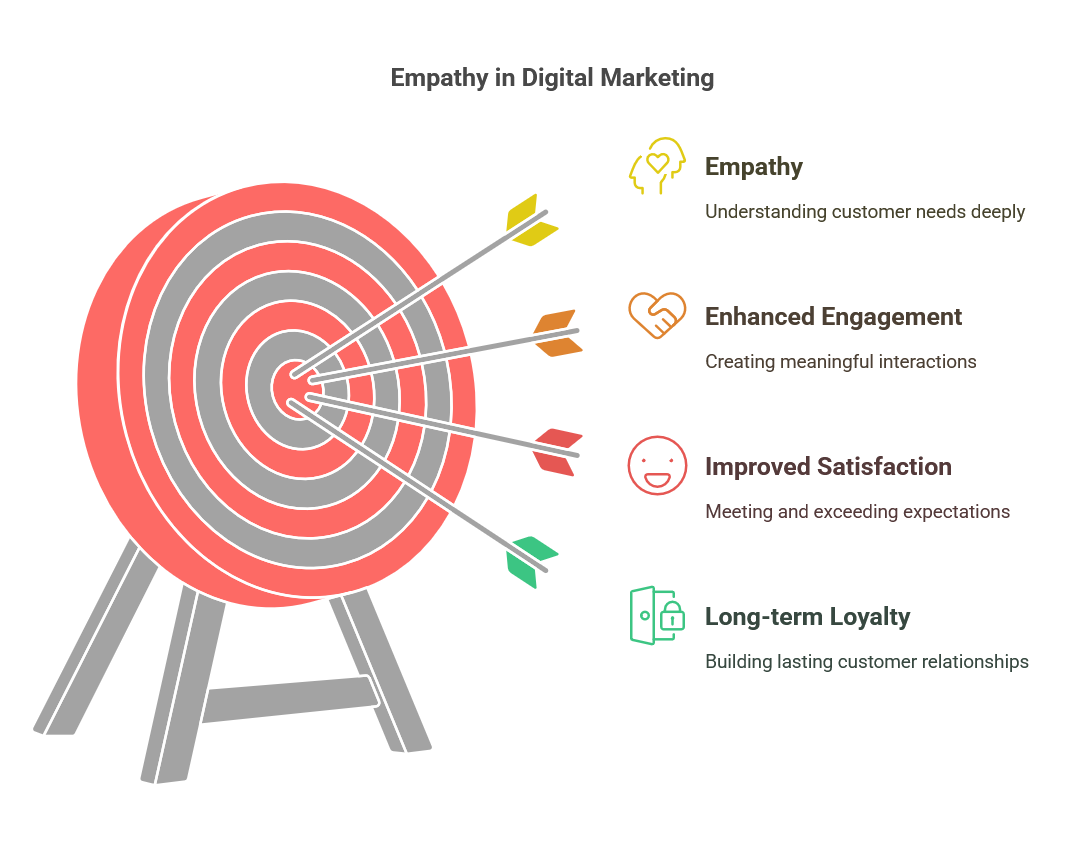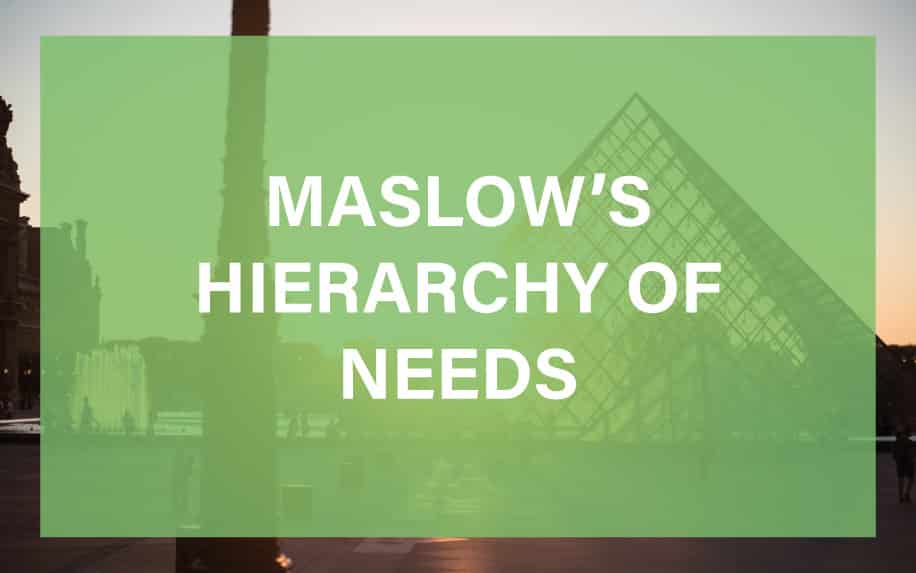
The Human Touch in a Tech-Driven World: Why Empathy Matters in Digital Marketing
Table of Contents
Automation, artificial intelligence, and data analytics have profoundly reshaped digital marketing. Yet customers, clients, and audiences across Northern Ireland, Ireland, and the UK still crave personal and meaningful connections. This comprehensive guide explores why empathy remains a key differentiator in digital marketing, showing how businesses can blend technology with a human-first mindset to forge deeper loyalty, brand affinity, and authentic engagement.
Understanding Empathy in the Digital Landscape

Empathy remains vital to fostering authentic connections with audiences in an era dominated by automation and data-driven marketing. While technology has reshaped how businesses engage with customers, understanding and responding to their emotional needs remains a key differentiator. This section explores the role of empathy in the digital marketing landscape, highlighting its importance in creating meaningful, human-centric experiences that drive long-term loyalty and engagement.
The Distinction Between Empathy and Sympathy
In the digital marketing context, empathy transcends basic understanding:
- True Empathy: Understanding your audience’s emotions, challenges, and aspirations from their perspective
- Beyond Sympathy: Moving past acknowledgement to genuine comprehension and appropriate response
- Personalised Connection: Recognising customers as individuals with unique circumstances
- Nuanced Interactions: Adapting communication based on emotional and practical needs
- Authentic Resonance: Creating marketing that reflects genuine understanding
In today’s technology-driven marketing landscape, empathy has become the critical differentiator for Northern Ireland businesses,” notes Ciaran Connolly, Director of ProfileTree. Our experience shows that companies who genuinely understand and respond to their customers’ emotional needs achieve significantly higher engagement and loyalty than those focused solely on transactions.
The Rarity of Genuine Empathy
Despite universal agreement on its importance, empathy often remains elusive in digital marketing:
- Metrics-First Mindset: Many campaigns prioritise clicks and conversions over customer experience
- Implementation Challenges: Translating empathetic intentions into practical marketing requires skill
- Resource Investment: Understanding audience needs demands significant research and analysis
- Organisational Alignment: True empathy requires commitment across all customer touchpoints
- Continuous Adaptation: Customer needs and contexts constantly evolve, requiring ongoing attention
Local understanding creates additional opportunities for meaningful connection through shared cultural context for businesses in Belfast, Derry, and broader Northern Ireland markets.
The Risks of Over-Automation in Marketing
While automation can significantly enhance efficiency and scalability, over-reliance on technology in marketing carries significant risks. This section explores how excessive automation can lead to impersonal interactions, missed emotional cues, and disconnecting from your audience’s needs. Understanding these risks is essential for businesses seeking to maintain genuine, meaningful connections with their customers while leveraging the benefits of automation.
Loss of Contextual Understanding
Purely automated approaches frequently miss essential nuances:
- Scripted Interactions: Chatbots and automated email sequences can feel mechanical and impersonal
- Context Blindness: Algorithms may miss situational factors affecting customer receptivity
- Emotional Tone Deafness: Automated systems often struggle to detect and respond to emotional cues
- Timing Insensitivity: Scheduled messaging may arrive at inappropriate moments
- Cultural Disconnection: Automated content may miss regional sensitivities or preferences
Potential for Audience Alienation
When technology operates without empathetic oversight:
- Trust Erosion: Customers who feel manipulated or treated as data points lose faith in brands
- Privacy Concerns: Over-personalisation without context can feel intrusive rather than helpful
- Negative Brand Associations: Poorly timed or tone-deaf automated messages create lasting damage
- Increased Resistance: Audiences develop “marketing blindness” to generic automated approaches
- Relationship Degradation: Existing customers may feel undervalued by impersonal treatment
The Challenge of Mechanised Communication
Over-reliance on technology creates recognisable patterns:
- AI-Generated Content: Often lacks authentic voice and emotional resonance
- Template-Based Design: Creates visual sameness that fails to connect emotionally
- Formulaic Messaging: Uses predictable structures that audiences learn to ignore
- Engagement Without Connection: Generates clicks without meaningful relationship-building
- Short-Term Focus: Prioritises immediate metrics over long-term brand relationships
How Empathy Transforms Digital Marketing Experiences

Empathy is more than just a buzzword in digital marketing—it’s a powerful tool that can revolutionise how brands connect with their audiences. By understanding customers’ emotional and practical needs, businesses can create more personalised and meaningful experiences. In this section, we’ll explore how empathy can enhance customer engagement, improve satisfaction, and ultimately drive long-term loyalty by transforming how brands interact with their audiences.
Comprehensive Audience Understanding
Empathy begins with genuine curiosity about your audience:
- In-Depth User Research: Conducting interviews, surveys, and observation studies
- Journey Mapping: Documenting the emotional aspects of customer experiences
- Pain Point Identification: Understanding frustrations from the customer’s perspective
- Aspiration Recognition: Acknowledging what customers hope to achieve
- Contextual Awareness: Considering life circumstances affecting customer decisions
For Northern Ireland businesses, this might include understanding regional economic factors, local cultural references, or community-specific concerns.
Personalised Customer Interactions
Empathy enables more meaningful customisation:
- Needs-Based Recommendations: Suggesting solutions that address actual customer challenges
- Contextual Communication: Adapting messages based on customer circumstances
- Life-Stage Relevance: Aligning offers with essential moments in customer journeys
- Preference Respect: Honouring communication choices and boundaries
- Anticipatory Service: Addressing needs before customers must request assistance
Implementation Example: A Belfast retailer might use personalised email campaigns to acknowledge local weather conditions or upcoming regional events rather than generic product recommendations.
Supportive Communication Approach
Empathetic marketing adopts a distinctly helpful tone:
- Consultative Language: Positioning your brand as a knowledgeable advisor
- Problem-Solving Focus: Emphasising how you help overcome challenges
- Emotional Acknowledgment: Recognising feelings associated with customer needs
- Clear, Compassionate Communication: Using accessible language without condescension
- Genuine Enthusiasm: Showing authentic interest in customer success
Practical Integration of Technology and Empathy
Successfully blending technology with empathy allows businesses to deliver efficient yet genuinely human experiences. In this section, we’ll explore how to leverage the strengths of both automation and emotional intelligence, creating a seamless approach that enhances customer interactions. Businesses can optimise their marketing efforts by strategically integrating technology with a human-first mindset while maintaining authentic, empathetic connections with their audience.
Strategic Division of Responsibilities
Leverage the strengths of both technology and human insight:
- AI for Data Collection: Use technology to gather and organise customer information
- Human Interpretation: Apply human judgment to understand the “why” behind the data
- Automated Efficiency: Deploy technology for consistent execution
- Human Creativity: Rely on people for emotional intelligence and creative solutions
- Continuous Learning Loop: Use AI insights to inform human strategy and human insights to improve AI
Empathetic Automation Design
Create automated systems with human sensibilities:
- Conversational Script Development: Design chatbot responses that acknowledge emotions
- Escalation Triggers: Program systems to recognise when human intervention is needed
- Tone Calibration: Ensure automated communications reflect brand personality
- Contextual Awareness: Build systems that consider customer history and circumstances
- Feedback Integration: Continuously improve based on customer responses
Northern Ireland Implementation: Program chatbots to recognise local terminology and references specific to Belfast, Derry, or other regional areas, creating more familiar conversational experiences.
Case Study: Subscription Business Retention
Business Context: A Belfast-based subscription box service noticed increased cancellations during economic uncertainty.
Empathetic Approach:
- Used data analytics to identify customers likely to cancel
- Created a proactive communication strategy acknowledging financial pressures
- Offered flexible options, including temporary pauses and reduced packages
- Implemented personalised “we understand” messaging from the founder
- Trained customer service team on empathetic retention conversations
Results:
- 40% reduction in cancellations
- Significant increase in customers choosing pause over cancellation
- Positive social media mentions about the company’s understanding approach
- Stronger long-term loyalty from retained customers
- Valuable insights for future product development
Building Trust Through E-E-A-T and Empathy
Trust is the cornerstone of lasting customer relationships, and combining E-E-A-T (Experience, Expertise, Authoritativeness, and Trustworthiness) with empathy is a powerful way to foster it. This section’ll explore how businesses can build credibility and loyalty by demonstrating expertise and a deep understanding of their customers’ needs. By integrating empathy into the E-E-A-T framework, brands can create more meaningful, trusted connections that resonate with their audience personally.
Experience Demonstration
Show genuine understanding through shared experiences:
- Authentic Case Studies: Share real stories of helping similar customers
- Team Perspectives: Highlight staff experiences relevant to customer challenges
- Founder’s Journey: Connect company origins to customer needs
- Community Involvement: Demonstrate understanding through local engagement
- Customer Spotlights: Feature stories showing deep comprehension of audience lives
For businesses in Belfast and Northern Ireland, this might include references to regional challenges and how your organisation has navigated them alongside your customers.
Expertise Application
Apply knowledge with empathetic relevance:
- Contextual Advice: Offer guidance tailored to specific customer situations
- Practical Resources: Create genuinely helpful tools and information
- Educational Content: Develop materials that address real questions
- Personalised Recommendations: Suggest solutions based on individual needs
- Proactive Insights: Share knowledge before customers need to ask
Authoritativeness Through Understanding
Build authority by demonstrating deep audience knowledge:
- Industry Leadership: Show how customer insights drive your innovations
- Research Publication: Share original studies about your audience
- Problem Anticipation: Address issues before they become widespread
- Thought Leadership: Develop perspectives that champion customer needs
- External Recognition: Earn acknowledgment for customer-centric approaches
Trustworthiness Enhancement
Build trust through respectful, transparent practices:
- Data Usage Transparency: Clearly explain how customer information is used
- Ethical Marketing Practices: Avoid manipulative tactics that erode trust
- Honest Communication: Acknowledge limitations and set realistic expectations
- Consistent Delivery: Follow through on promises across all touchpoints
- Mistake Ownership: Take responsibility when empathy falls short
Channel-Specific Empathy Implementation
Different marketing channels offer unique opportunities to engage with customers, but each requires a tailored approach to empathy. This section’ll examine how to implement empathy across various platforms, from social media and email marketing to customer service and website design. By adapting your empathetic communication to the specific context of each channel, you can ensure that your brand’s message resonates more deeply and effectively with your audience.
Social Media Engagement
Transform platforms into genuine connection points:
- Active Listening: Monitor conversations to understand audience concerns
- Meaningful Interaction: Respond thoughtfully rather than with generic replies
- Community Building: Foster connections among customers with shared interests
- Behind-the-Scenes Access: Share authentic glimpses into your organisation
- Crisis Sensitivity: Adjust tone and content during challenging times
Northern Ireland Example: A Belfast restaurant might acknowledge specific local events or weather conditions affecting customers, showing awareness of their daily experience.
Email Marketing Humanisation
Create messages that feel personally relevant:
- Behavioural Segmentation: Group recipients based on actions and preferences
- Contextual Timing: Send messages when they’re most relevant to recipients
- Conversational Tone: Write as one person speaking to another
- Personal Touches: Include team member signatures and photos
- Response Encouragement: Invite replies and feedback to email campaigns
Website Experience Optimisation
Design digital spaces that address human needs:
- Intuitive Navigation: Create paths based on actual user goals
- Supportive Microcopy: Include helpful explanations and encouragement
- Anticipatory Design: Address potential concerns before they arise
- Accessibility Focus: Ensure everyone can engage comfortably
- Emotional Design Elements: Use colour, imagery, and language to create connection
Customer Service Enhancement
Transform support into a relationship-building opportunity:
- Empowerment Training: Equip staff to make empathetic decisions
- Emotion Recognition: Teach teams to identify and address customer feelings
- Solution Flexibility: Allow staff to adopt policies to individual circumstances
- Follow-up Processes: Check-in after issue resolution to ensure satisfaction
- Feedback Integration: Use support interactions to improve the overall experience
Navigating Potential Pitfalls
While empathy-driven marketing offers immense potential, there are also challenges to consider. This section will address the common pitfalls businesses may encounter when balancing personalisation with privacy, authenticity with automation, and emotional engagement with data-driven strategies. Understanding these potential missteps will help ensure that your efforts to connect with customers remain genuine and practical without compromising trust or brand integrity.
Privacy Boundary Respect
Balance personalisation with appropriate restraint:
- Transparent Data Practices: Communicate what information is collected and why
- Permission-Based Marketing: Seek explicit consent for personalised approaches
- Preference Controls: Offer easy options to adjust communication frequency and content
- Contextual Relevance: Ensure personalisation serves customer needs, not just marketing goals
- Cultural Sensitivity: Consider regional attitudes toward privacy and disclosure
For Northern Ireland businesses, understanding local expectations around privacy and communication can be particularly important in building trust.
Authenticity in Personalisation
Avoid superficial approaches that feel manipulative:
- Meaningful Customisation: Base personalisation on genuine understanding, not just data points
- Contextual Relevance: Ensure personalised elements improve the experience
- Consistent Voice: Maintain authentic brand personality in all customised content
- Value Addition: Focus on how personalisation benefits the customer
- Human Oversight: Review automated personalisation for tone and appropriateness
Organisational Consistency
Ensure empathy extends throughout the customer experience:
- Cross-Department Alignment: Maintain a consistent approach across marketing, sales, and service
- Training Integration: Develop empathy skills at all levels of the organisation
- Value Reinforcement: Recognise and reward empathetic customer interactions
- Leadership Modelling: Demonstrate empathy in management practices
- Process Design: Build empathy into operational workflows and decision-making
Practical Framework for Empathy-Driven Marketing
Creating an empathy-driven marketing strategy requires more than understanding your audience—it involves implementing structured processes that prioritise customer needs at every touchpoint. This section will outline a practical framework to help businesses integrate empathy into their marketing efforts, from gathering customer insights to refining communication strategies. Following this framework, companies can build more profound, meaningful connections with their audience and drive long-term loyalty.
Customer Listening Systems
Establish structured approaches to understanding your audience:
- Voice of Customer Programmes: Collect feedback through multiple channels
- Social Listening: Monitor conversations about your brand and industry
- Customer Advisory Groups: Create forums for direct dialogue
- Frontline Feedback Loops: Gather insights from customer-facing staff
- Behavioural Analytics: Study how customers use your products and services
Collaborative Development
Involve customers in your evolution:
- Beta Testing Groups: Invite participation in new product development
- Feature Voting: Allow customers to influence prioritisation
- Content Co-Creation: Develop materials alongside your audience
- Open Innovation: Create channels for customer-initiated ideas
- Transparent Roadmaps: Share plans and invite feedback
Team Empathy Cultivation
Develop organisation-wide emotional intelligence:
- Empathy Training: Provide structured development for all customer-facing staff
- Cross-Functional Exposure: Help teams understand different customer touchpoints
- Customer Immersion: Create opportunities for staff to experience the customer journey
- Shared Customer Stories: Regularly communicate real examples throughout the organisation
- Empathy Metrics: Include customer experience measures in performance evaluation
Continuous Refinement Process
Create systems for ongoing improvement:
- Experience Measurement: Track empathy-related metrics over time
- A/B Testing: Compare different approaches to emotional connection
- Customer Panels: Gather regular feedback on communication and experience
- Competitor Analysis: Study best practices in empathetic marketing
- Trend Monitoring: Stay aware of evolving customer expectations
The Future of Empathy in Digital Marketing
As technology continues to evolve, so does the role of empathy in digital marketing. This section will explore emerging trends and tools that promise to enhance empathetic engagement, such as emotional AI, predictive empathy, and hyper-personalisation. Understanding how these innovations can be applied responsibly will help businesses stay ahead of the curve, ensuring they continue to build authentic human connections in an increasingly automated world.
Emerging Technology Applications
New tools present both opportunities and challenges:
- Emotional AI: Systems capable of recognising and responding to human emotions
- Predictive Empathy: Using data to anticipate emotional needs before they’re expressed
- Virtual Reality Experiences: Creating immersive opportunities for perspective-taking
- Voice and Facial Analysis: Technology that interprets emotional cues in customer interactions
- Hyper-Personalisation: Increasingly tailored experiences based on a comprehensive understanding
Ethical Considerations
Navigate important boundaries as capabilities evolve:
- Transparency Requirements: Disclose when AI is being used
- Consent Prioritisation: Obtain permission for emotionally-responsive technology
- Manipulation Avoidance: Ensure emotional insights aren’t used exploitatively
- Human Oversight: Maintain appropriate supervision of automated empathy
- Inclusivity Focus: Ensure technology works equitably across diverse audiences
Balance of Human and Technological Elements
Find the optimal integration as capabilities advance:
- Augmented Empathy: Using technology to enhance human emotional intelligence
- Strategic Automation: Deploying AI for appropriate tasks while preserving human connection
- Skill Evolution: Developing new competencies that complement technological capabilities
- Experience Design: Creating seamless transitions between automated and human interactions
- Relationship Ecosystems: Building comprehensive approaches across digital and physical touchpoints
The Competitive Advantage of Human Connection
In an increasingly automated marketing landscape, businesses that successfully integrate genuine empathy gain significant advantages. For organisations across Northern Ireland, Ireland, and the UK, the ability to connect authentically with customers creates differentiation that technology alone cannot replicate.
The most effective approach combines the efficiency and scale of modern marketing technology with the irreplaceable understanding that comes from human emotional intelligence. By investing in technological capabilities and empathy development, businesses can create marketing that resonates on a deeper level, building lasting relationships rather than merely driving transactions.
As digital marketing continues to evolve, those who maintain a firm commitment to understanding their customers as complete human beings—with complex emotions, challenges, and aspirations—will achieve the meaningful connections that drive long-term business success.
Need expert guidance implementing empathy-driven digital marketing for your business? ProfileTree specialises in human-centred marketing strategies for organisations throughout Northern Ireland, Ireland, and the UK. Our team combines technological expertise with deep customer understanding to create digital experiences that truly connect with your audience. Contact us to discuss how we can enhance your marketing approach.




